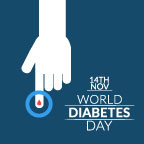Type 2 diabetes and obesity: Twincretins and the potential of dual GLP-1/GIP agonists
The combination of GLP-1 and GIP agonists, dubbed ‘twincretins’, has received much attention in recent years. The idea is that activating both together should maximise the beneficial effect of incretins on body weight and glucose homeostasis compared to GLP-1 or GIP monotherapy: the improved glycemia from GLP-1 should further activate the insulinotropic response of GIP.
The epidemics of Type 2 diabetes mellitus (T2DM) and obesity represent a significant burden on global healthcare. In recent decades, managing glucose metabolism and weight loss have been dominated by incretin-based approaches. Incretins are released from the gut lining after eating in response to carbohydrate absorption.
The two predominant incretins, glucagon-like peptide-1 (GLP-1) and glucose-dependent insulinotropic polypeptide (GIP), control glucose metabolism by stimulating endogenous insulin secretion. What if both pathways were targeted simultaneously?
Several biopharmaceutical companies have investigated GLP-1/GIP receptor co-agonists. However, a number of these have been discontinued, and only Eli Lilly’s tirzepatide is being developed.
“Several biopharmaceutical companies have investigated GLP-1/GIP receptor co-agonists…only Eli Lilly’s tirzepatide is being developed.“
Tirzepatide has made it onto the market, after its efficacy and safety were proved in five Phase 3 trials in the SURPASS programme. During this series of trials, increasing doses of tirzepatide were investigated, either as monotherapy or in combination with approved medications. Its efficacy was compared to the GLP-1 receptor agonist semaglutide and insulin analogues, as well as placebo.
It was approved by FDA in May 2022 as a once-weekly injectable medication for the treatment of T2DM and is being sold under the brand name Mounjaro.
Future Prospects
More recently, diabetes treatment has largely shifted from mere glucose control to exploiting more complex regulatory pathways involving multiple components. In addition to controlling glucose metabolism, the aim is to minimise mortality driven by cardiovascular, renal and other complications associated with T2DM and obesity.
Tirzepatide is already being positioned as a promising treatment option, but much remains to be learned about the twincretin class of molecules. For example, would tirzepatide match or exceed the beneficial effects of GLP-1 receptor agonists on cardiorenal or liver disease in the long term?
“Tirzepatide is already being positioned as a promising treatment option, but much remains to be learned about the twincretin class of molecules.“
Several ongoing clinical trials should shed some light on this. These include SURPASS-CVOT trial comparing it to dulaglutide in cardiovascular outcomes, and two placebo-controlled trials, SUMMIT in heart failure, and SYNERGY-NASH in NASH.

Don’t forget it’s World Diabetes Day on Nov 14
Furthermore, the relative therapeutic contribution of each incretin remains unknown. Insight would come from a greater understanding of its cell- and tissue-specific receptor occupancy at a molecular level. With such increased understanding, in combination with preclinical models that are sensitive to twincretins and have high translational value to the clinic, it should be possible to design and develop dual receptor agonists with both greater efficacy and improved safety.
This would be hugely beneficial for patients with T2DM and obesity and offers the intriguing potential of reducing their healthcare burden.
